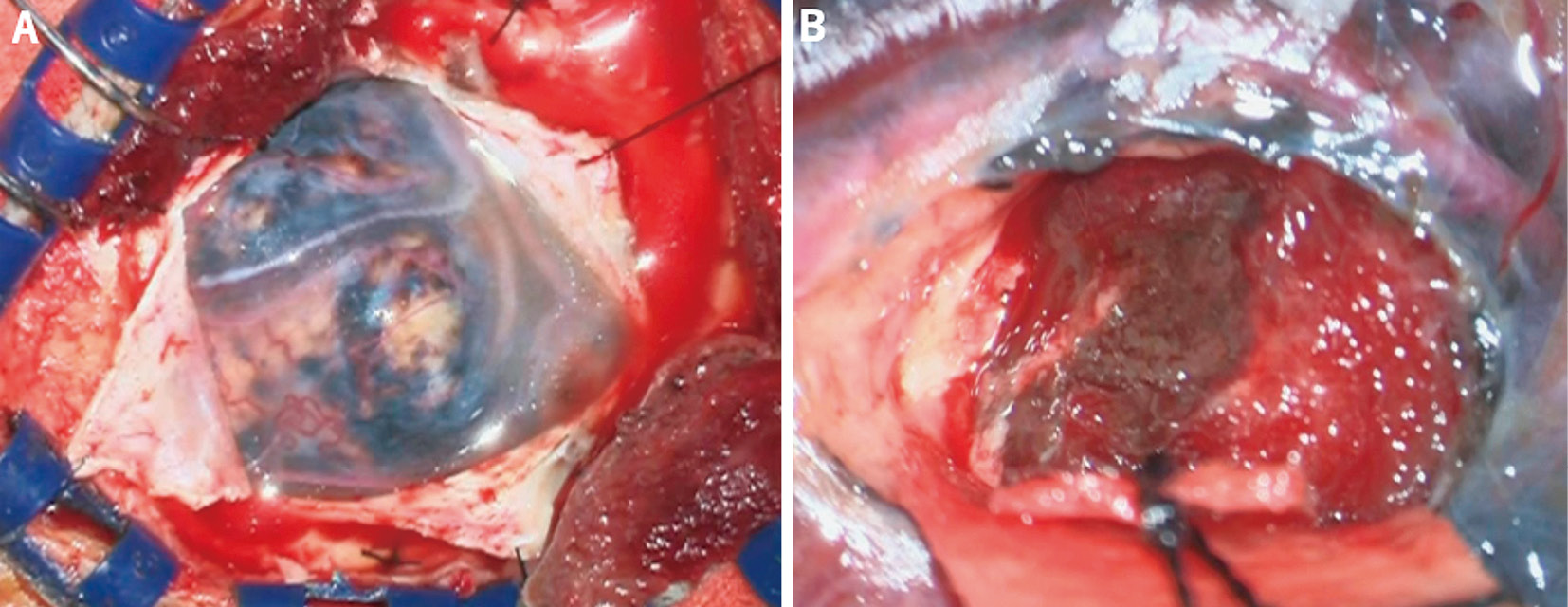- 著者
- Taisuke Akimoto Makoto Ohtake Takafumi Kawasaki Shuto Fushimi Wataru Shimohigoshi Hiroshi Manaka Takashi Kawasaki Katsumi Sakata Ichiro Takeuchi Tetsuya Yamamoto
- 出版者
- The Japanese Society for Neuroendovascular Therapy
- 雑誌
- Journal of Neuroendovascular Therapy (ISSN:18824072)
- 巻号頁・発行日
- pp.oa.2022-0043, (Released:2023-01-07)
- 参考文献数
- 24
Objective: To identify factors associated with the outcome and prognosis of coil embolization for poor-grade aneurysmal subarachnoid hemorrhage (aSAH).Methods: We retrospectively reviewed 118 patients with World Federation of Neurosurgical Societies (WFNS) grade IV or V subarachnoid hemorrhage at our institute between January 2010 and December 2020. Outcomes were assessed using modified Rankin Scale (mRS) scores at discharge and at six months after aSAH onset. In addition, patient background, aneurysm characteristics, and treatment outcome were compared between patients showing favorable (mRS scores: 0–2) and unfavorable (mRS scores: 3–6) outcomes at six months. Factors for change of mRS during follow-up were explored, and cut off values were calculated for age using the receiver operating characteristic analysis.Results: Endovascular treatment was performed in 51 of the 118 enrolled patients. Data were analyzed for 43 of these patients who underwent coil embolization of ruptured aneurysms and had complete datasets. The mean age was 61.7 years and 24 (55.8%) patients had WFNS grade V aSAH. Coil embolization-related complications were observed in three patients. There were no treatment-related deaths; however, eight patients (18.6%) died at three months. Multivariate analysis showed that the maximum diameter of the aneurysm (p=0.041) and the postoperative dual antiplatelet therapy (DAPT) (p=0.040) were associated with unfavorable and favorable outcomes, respectively. Older age (p=0.033) was independently associated with mRS score deterioration following discharge. Age 72 years and older was the cut off value for mRS deterioration.Conclusion: Aneurysm size and postoperative DAPT might be associated with outcomes at 6 months. Moreover, we identified older age as an independent factor that influences mRS deterioration following discharge; thus, especially in cases of elderly patients over 72 years of age, it is highly likely that long-term care to prevent disuse and regular follow-up on imaging will be necessary.
- 著者
- Taisuke Akimoto Makoto Ohtake Takafumi Kawasaki Shuto Fushimi Wataru Shimohigoshi Hiroshi Manaka Takashi Kawasaki Katsumi Sakata Ichiro Takeuchi Tetsuya Yamamoto
- 出版者
- The Japanese Society for Neuroendovascular Therapy
- 雑誌
- Journal of Neuroendovascular Therapy (ISSN:18824072)
- 巻号頁・発行日
- vol.17, no.2, pp.47-55, 2023 (Released:2023-02-20)
- 参考文献数
- 24
Objective: To identify factors associated with the outcome and prognosis of coil embolization for poor-grade aneurysmal subarachnoid hemorrhage (aSAH).Methods: We retrospectively reviewed 118 patients with World Federation of Neurosurgical Societies (WFNS) grade IV or V subarachnoid hemorrhage at our institute between January 2010 and December 2020. Outcomes were assessed using modified Rankin Scale (mRS) scores at discharge and at six months after aSAH onset. In addition, patient background, aneurysm characteristics, and treatment outcome were compared between patients showing favorable (mRS scores: 0–2) and unfavorable (mRS scores: 3–6) outcomes at six months. Factors for change of mRS during follow-up were explored, and cut off values were calculated for age using the receiver operating characteristic analysis.Results: Endovascular treatment was performed in 51 of the 118 enrolled patients. Data were analyzed for 43 of these patients who underwent coil embolization of ruptured aneurysms and had complete datasets. The mean age was 61.7 years and 24 (55.8%) patients had WFNS grade V aSAH. Coil embolization-related complications were observed in three patients. There were no treatment-related deaths; however, eight patients (18.6%) died at three months. Multivariate analysis showed that the maximum diameter of the aneurysm (p=0.041) and the postoperative dual antiplatelet therapy (DAPT) (p=0.040) were associated with unfavorable and favorable outcomes, respectively. Older age (p=0.033) was independently associated with mRS score deterioration following discharge. Age 72 years and older was the cut off value for mRS deterioration.Conclusion: Aneurysm size and postoperative DAPT might be associated with outcomes at 6 months. Moreover, we identified older age as an independent factor that influences mRS deterioration following discharge; thus, especially in cases of elderly patients over 72 years of age, it is highly likely that long-term care to prevent disuse and regular follow-up on imaging will be necessary.
- 著者
- Kenta NAKASE Ryosuke MATSUDA Tomoya OKAMOTO Ichiro NAKAGAWA Maiko TAKEDA Katsumi SAKATA Hiroyuki NAKASE
- 出版者
- The Japan Neurosurgical Society
- 雑誌
- NMC Case Report Journal (ISSN:21884226)
- 巻号頁・発行日
- vol.10, pp.315-320, 2023-12-31 (Released:2023-11-11)
- 参考文献数
- 30
Meningeal melanocytomas of the central nervous system, although typically benign, rarely undergo malignant transformations. A 46-year-old man presented with headache and nausea 4 years after gross total resection of a craniovertebral junction meningeal melanocytoma at another hospital. The initial clinical course was previously reported.1) Computed tomography revealed the presence of multiple intracranial mass lesions. Furthermore, magnetic resonance imaging showed multiple intracranial lesions and meningeal dissemination. A biopsy was performed for a circumflex lesion located in the right frontal lobe. Pathological examination showed anaplastic changes and a Ki-67 index of 33%. Based on the pleomorphic changes and high mitotic activity, the patient was diagnosed with primary cerebral malignant melanoma. The patient received four cycles of nivolumab (80 mg) and ipilimumab (165 mg), followed by whole-brain radiotherapy (37.5 Gy). However, the disease progressed after the third cycle. Genome analysis revealed GNAQ Q209P and SF3B1 R625C mutations, but no treatments related to these gene mutations were available. Despite the seven cycles of nivolumab therapy, the patient eventually passed away 9 months after surgery. This case was a rare example of malignant transformation and leptomeningeal melanomatosis in a meningeal melanocytoma. It highlights the importance of careful follow up after gross total resection. Identification of molecular alterations can lead to better detection of melanocytic melanomas with poor prognosis and high risk of recurrence and metastasis. It can also facilitate the development of novel therapeutic options for these patients.
